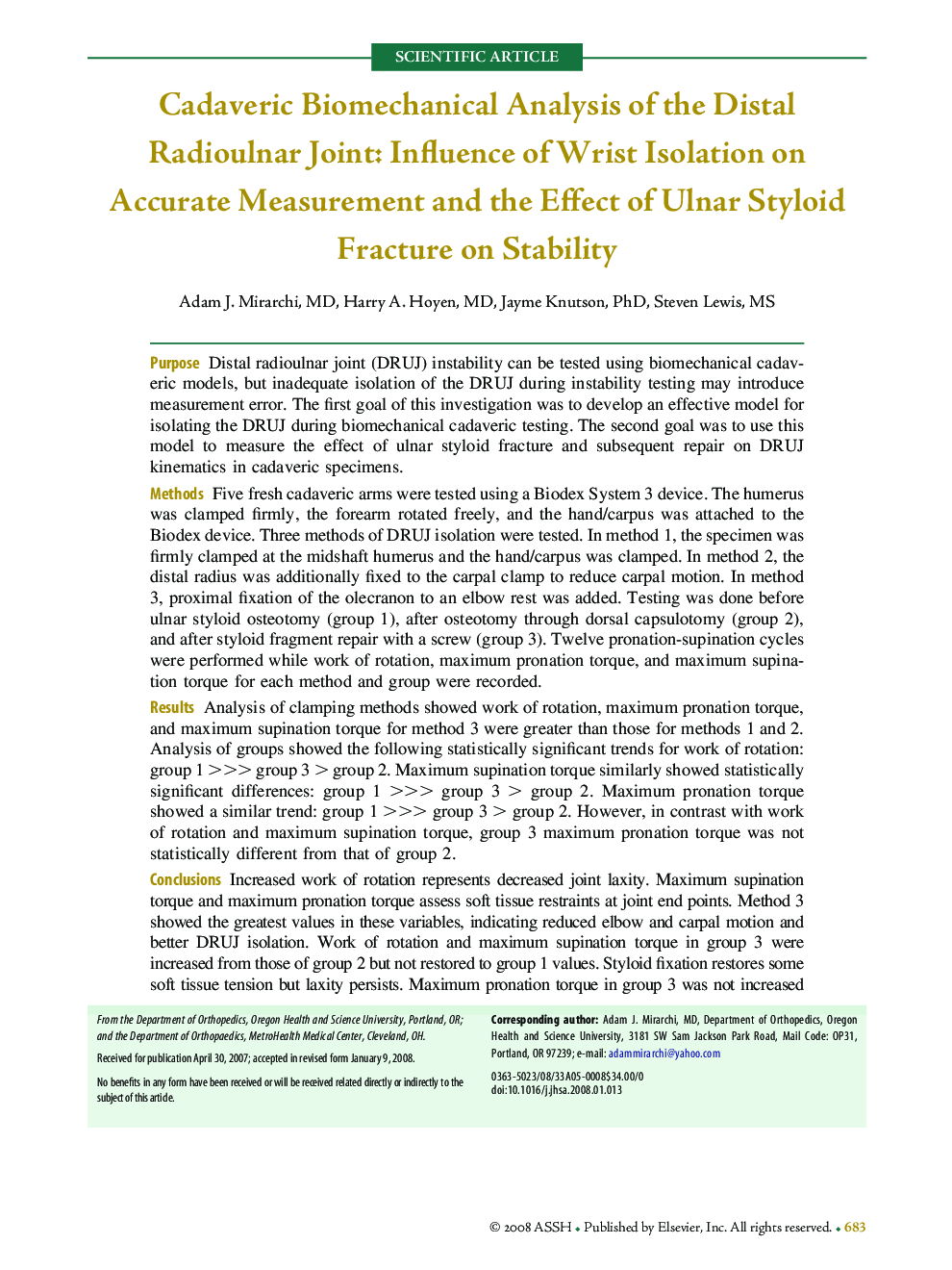| Article ID | Journal | Published Year | Pages | File Type |
|---|---|---|---|---|
| 4070793 | The Journal of Hand Surgery | 2008 | 8 Pages |
PurposeDistal radioulnar joint (DRUJ) instability can be tested using biomechanical cadaveric models, but inadequate isolation of the DRUJ during instability testing may introduce measurement error. The first goal of this investigation was to develop an effective model for isolating the DRUJ during biomechanical cadaveric testing. The second goal was to use this model to measure the effect of ulnar styloid fracture and subsequent repair on DRUJ kinematics in cadaveric specimens.MethodsFive fresh cadaveric arms were tested using a Biodex System 3 device. The humerus was clamped firmly, the forearm rotated freely, and the hand/carpus was attached to the Biodex device. Three methods of DRUJ isolation were tested. In method 1, the specimen was firmly clamped at the midshaft humerus and the hand/carpus was clamped. In method 2, the distal radius was additionally fixed to the carpal clamp to reduce carpal motion. In method 3, proximal fixation of the olecranon to an elbow rest was added. Testing was done before ulnar styloid osteotomy (group 1), after osteotomy through dorsal capsulotomy (group 2), and after styloid fragment repair with a screw (group 3). Twelve pronation-supination cycles were performed while work of rotation, maximum pronation torque, and maximum supination torque for each method and group were recorded.ResultsAnalysis of clamping methods showed work of rotation, maximum pronation torque, and maximum supination torque for method 3 were greater than those for methods 1 and 2. Analysis of groups showed the following statistically significant trends for work of rotation: group 1 >>> group 3 > group 2. Maximum supination torque similarly showed statistically significant differences: group 1 >>> group 3 > group 2. Maximum pronation torque showed a similar trend: group 1 >>> group 3 > group 2. However, in contrast with work of rotation and maximum supination torque, group 3 maximum pronation torque was not statistically different from that of group 2.ConclusionsIncreased work of rotation represents decreased joint laxity. Maximum supination torque and maximum pronation torque assess soft tissue restraints at joint end points. Method 3 showed the greatest values in these variables, indicating reduced elbow and carpal motion and better DRUJ isolation. Work of rotation and maximum supination torque in group 3 were increased from those of group 2 but not restored to group 1 values. Styloid fixation restores some soft tissue tension but laxity persists. Maximum pronation torque in group 3 was not increased significantly from that of group 2, perhaps from dorsal capsulotomy causing soft tissue injury and laxity not corrected with fixation. The influence of ulnar styloid fracture on dynamic DRUJ kinematics can be demonstrated in this model.
